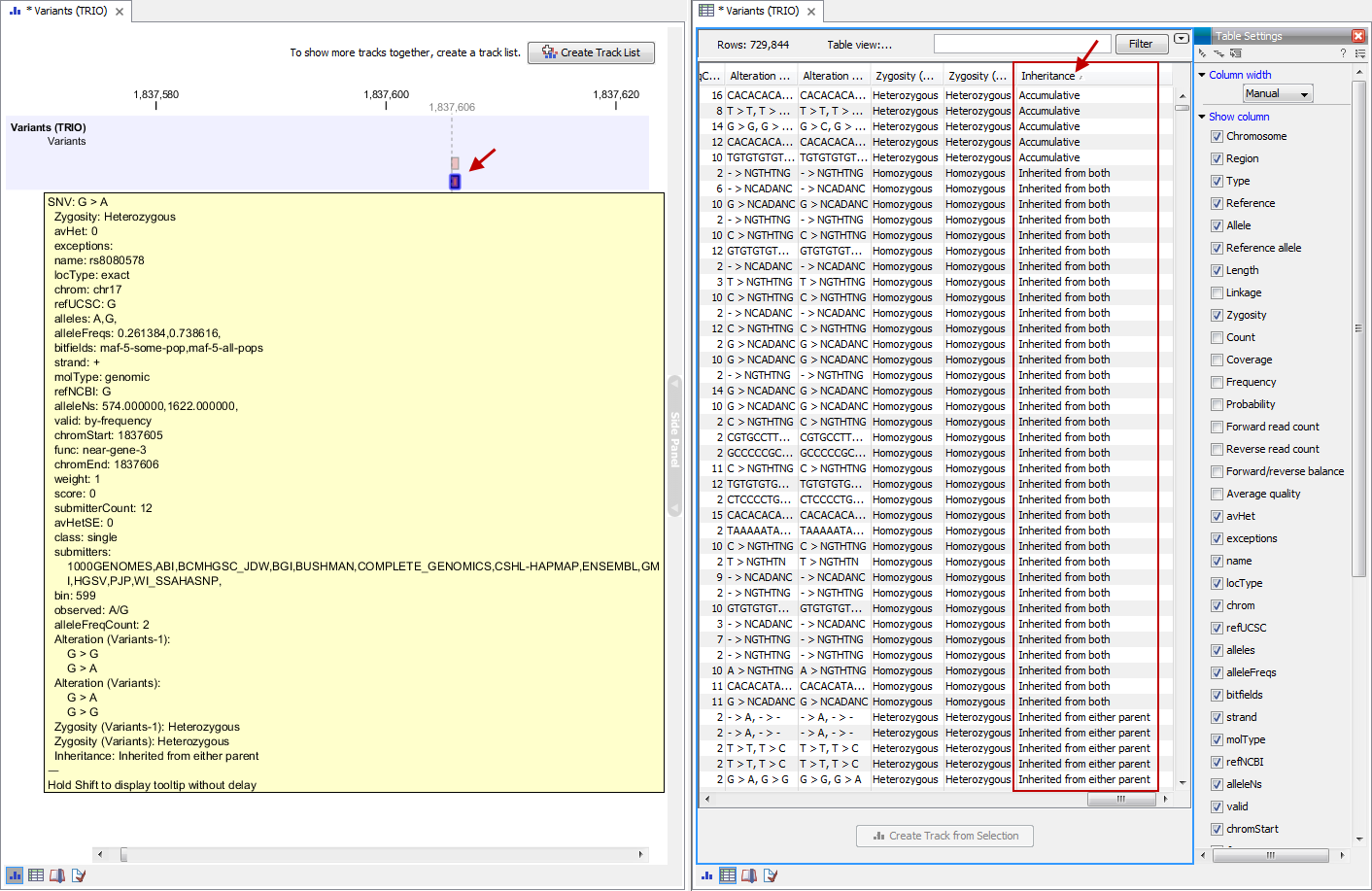Trio analysis
This tool should be used if you have a trio study with one child and its parents. It should be mainly used for investigating differences in the child in comparison to its parents.
Toolbox | Resequencing (![]() ) | Compare Variants | Trio Analysis
) | Compare Variants | Trio Analysis
In the first step of the dialog, select the variant track of the child. Clicking Next shows the dialog in figure 26.34.

Figure 26.34: Selecting variant tracks of the parents.
Click on the folder (![]() ) to select the two variant tracks from the parents and click Next and Finish.
) to select the two variant tracks from the parents and click Next and Finish.
The output is a variant track showing all variants detected in the child. For each variant in the child, it is reported whether the variant is inherited from the father, mother, both or is a de novo mutation. This information can be found in the tooltip for each variant or by switching to the table view (see the column labeled "Inheritance") (figure 26.35).

Figure 26.35: Output from Trio Analysis showing the variants found in the child in track and table format.
In cases where both parents are heterozygous with respect to a variant allele, and the child has the same phenotype as the parents, it is unclear which allele was inherited from which parent. Such mutations are described as 'Inherited from either parent'.
In cases where both parents are homozygous with respect to a variant allele, and the child has the same phenotype as the parents, it is also unclear which allele was inherited from which parent. Such mutations are described as 'Inherited from both parents'.
In cases where both parents are heterozygous and the child homozygous for the variant, the child has inherited a variant from both parents. In such cases the tool will also check for a potential 'accumulative' mutation. Accumulative mutations are present in a heterozygous state in each of the parents, but are homozygous in the child. To investigate potential disease relevant variants, 'accumulative' variants and de novo variants are the most interesting (in case the parents are not affected). The tool will also add information about the genotype (homozygote or heterozygote) in all samples.
The following annotations will be added to the resulting child track:
- Zygosity
- Zygosity in the child as reported from the variant caller. Can be either homozygote or heterozygote.
- Zygosity (Name of parent track 1)
- Zygosity in the corresponding parent (e.g. father) as reported from the variant caller. Can be either homozygote or heterozygote.
- Allele variant (Name of parent track 1)
- Alleles called in the corresponding parent (e.g. father).
- Zygosity (Name of parent track 2)
- Zygosity in the corresponding parent (e.g. mother) as reported from the variant caller. Can be either homozygote or heterozygote.
- Allele variant (Name of parent track 2)
- Alleles called in the corresponding parent (e.g. mother).
- Inheritance
- Inheritance status. Can be one of the following values: 'De novo', 'Accumulative', 'Inherited from both', 'Inherited from (Name of parent track)'.
Please note: If the variant at this position cannot be found in either of the parents the zygosity status, of the parent where the variant has not been found, is unknown and the allele variant column will be left empty.
